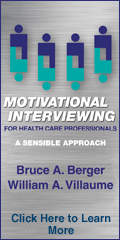
| Archives/Subscribe | Advertise | cmsa.org | cmsa.org | cmsatoday.org | September 2013 |
Exploring How Technology Can Support Patient Engagement Strategies
Senior Vice President TCS Healthcare Technologies Care managers are an integral part of managing a patient’s health—ensuring patients adhere to their care plans, providing advice and information when patients have questions, and helping patients become and remain healthy. However, the positive outcomes associated with proper care management cannot be achieved by the care manager alone. They need a total commitment from the patient to become involved, since patient engagement is a critical element of successful care management. Patient engagement is defined by the Agency for Healthcare Research and Quality (AHRQ) as "an ongoing process in which patients take an active role in their own health care." While a white paper written by the Center for Advancing Health describes it as "actions individuals must take to obtain the greatest benefit from the health care services available to them." Engagement integrates health care information and professional advice with a patient’s personal needs, skills, motivation, preferences and abilities. It focuses on behaviors of an individual that are critical to health outcomes, rather than the actions of professionals, technology or institutional policies. However, knowing what types of technology patients currently use, as well as where IT trends are headed, can help care managers and other health care professionals target their outreach strategies to keep patients engaged. This belief is reflected in the results of the CMSA-sponsored Health IT Survey, which has been conducted bi-annually since 2008. By tracking and comparing the results of each survey, the study sponsors have identified trends and key factors that can influence patient communication and engagement strategies. The survey results are particularly pertinent, as respondents were mostly care managers and other providers who render and coordinate care. Provider-Patient Communications Enhanced provider-patient communications can clearly improve patient engagement levels with the hope of improving clinical outcomes. By utilizing technology that patients are already familiar and comfortable with, providers can eliminate potential barriers associated with the use of new technology and focus their efforts on patient care. As detailed in Trend Report #2 of the 2012 Health IT Survey, care managers and providers use a variety of communication platforms and techniques. The majority of care managers and providers reported using traditional communication methods to reach out and connect with their patients, such as telephone calls (91%), letters (74%) and face-to-face conversations (71%). At the same time, it also appears that respondents are using emerging communication platforms more regularly. When comparing the 2010 and 2012 Health IT Surveys, responses indicate an increased use of text messaging, social networking sites, member/patient portals, wireless monitoring solutions, email and smartphone applications. Over the same two-year period, the use of several traditional patient communication methods (facsimile, telephones and letters) have decreased. While the percent of care managers and other providers that report using the newer wireless and web-based communication portals is much lower than those using traditional methods, undoubtedly they will continue to grow. As the 2010 survey predicted, the use of text messaging and social networking, such as Facebook and micro-blogging (including Twitter), doubled in the last two years. Medical Advice and Information In terms of implementing a successful patient engagement strategy, care managers and other medical professionals need to be aware of where patients usually turn for medical advice. As highlighted in Trend Report #5 (the latest in the series that will be published early next month), the majority of 2012 survey respondents report that most of their clients/patients rely on advice from: primary care physicians (86%), specialist physicians (70%), care managers (69%) and family or friends (59%). These findings are similar to the 2010 survey results, but with a slight uptick in all categories. It is safe to assume that medical advice from trained and licensed clinicians is a positive and helps patients understand their treatment plans. Interestingly, the use of health websites, such as WebMD (the fifth most used resource) dropped 6 points from 45% in 2010 to 39% in 2012. This may suggest that patients are now more likely to consult resources embedded in smartphone applications versus a traditional health website. This might be good and bad in terms of the impact on patients. Good in terms of ease of access, and bad in terms of making sure all of the smartphone applications are evidence-based and properly peer-reviewed. Of course, this concern applies to online and printed content as well. As one would expect in a society that is becoming increasingly digitized, the use of print media, as a source of medical advice, dropped dramatically from 40% in 2010 to only 25% in 2012. Of course, there is a time and place for printed literature to optimize patient outcomes even in today’s society. Clearly, the personal touch through physicians and care managers remain the most significant source of information for patients. It allows providers to let patients know they truly care about them. Engagement develops naturally when patients have regular, focused, active involvement and open communication with their health care providers. Technology-Aided Monitoring For the first time in the Health IT Survey series, the 2012 survey asked about the use of new technology to aid with patient monitoring, including patient medication and treatment adherence. An overwhelming majority of respondents (64%) reported using phone calls for patient monitoring. However, it appears other patient monitoring technologies are not used as frequently. For example, the second most used patient monitoring technology was heart rate/blood pressure monitoring devices (28%), followed by lifestyle monitoring devices (pedometers or meal trackers) and medication reminder solutions (19%). Although consumers are using smartphone applications, only 6% of providers report utilizing them with their patients. Similarly, only 8% use text messaging and only 3% use video conferencing. More research is needed to fully understand the impact of wireless and remote monitoring solutions on patient engagement levels. Final Thoughts Of course, this column only scratches the surface regarding how care managers and other providers can engage patients. We must remember that whatever technology is used to help foster patient engagement, it is only a tool. Much more needs to occur, in addition to technology, for true patient engagement to occur. Other areas that should be studied and discussed include patient literacy levels, medication adherence, access to community resources, readiness for change, behavioral factors, and the impact of other diseases and co-morbidities—along with many other influences. In an increasingly mobile and technology-driven society, providers and patients now have the ability to utilize tools that were previously unavailable or under-utilized in order to open a dynamic line of communication. The establishment of two-way ubiquitous communication channels should also empower patients to become more involved in and accountable for their own care. One could also surmise that enhanced clinical data feedback loops will allow care managers and other providers to help patients make more informed decisions and perhaps become more engaged between patient consultations. Stay tuned for more details on "Patient Engagement Strategies" from the 2012 Health IT Survey when the sponsors publish Trend Report #5 (due out in early October). The report will be available for download at www.tcshealthcare.com or www.cmsa.org. To contact Pat Stricker: Email her at pstricker@tcshealthcare.com or reach her at (530) 886-1700 ext. 215. |
|
| The leading membership association providing professional collaboration across the health care continuum. 6301 Ranch Drive | Little Rock, AR 72223 | Phone: (501) 225-2229 | Toll-Free: (800) 216-2672 | Fax:(501) 221-9608 Secure Fax Line for Credit Cards: (501) 421-2135 | Email: cmsa@cmsa.org | Website: www.cmsa.org |



